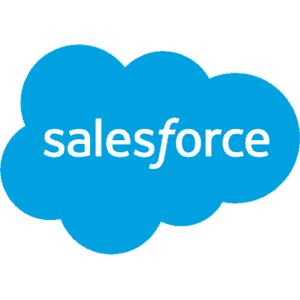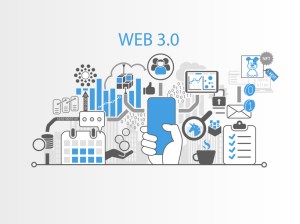How Small Businesses Can Use LinkedIn For Marketing



There’s always a difference between using a social media platform in your personal time and using it as a marketing channel for your company, and that’s particularly true of small and medium-sized businesses that want to reach their audience via LinkedIn. In its earliest days, LinkedIn came across

Salesforce Canada
There’s always a difference between using a social media platform in your personal time and using it as a marketing channel for your company, and that’s particularly true of small and medium-sized businesses that want to reach their audience via LinkedIn.
In its earliest days, LinkedIn came across like a large database of resumes, where individuals could keep their experience, education and other details as up to date as possible. Apart from recruiters, it didn’t seem like a platform to be used by companies.
Over time, that’s changed a lot, particularly as LinkedIn has rolled out features to help set up and maintain company pages as an extension of a business’s existing digital presence. Given that many people use LinkedIn to share insight and professional accomplishments, it’s a natural venue for organizations to align their brand.
What does that mean in practice, though? SMBs might be put off by LinkedIn at first because it seems like just another social media channel to manage. It’s also a place where, based on the work-related nature of the discussions, more “fun” or creative content doesn’t seem to have a place.
Firms that have spent time on LinkedIn know the opposite is true. When you begin to view LinkedIn as less of a discrete activity and more as an environment to help execute your marketing strategy, the benefits can be enormous.
For starters, LinkedIn provides details about individual people using its platform — far more than the bio area of a Twitter profile allows, and is naturally less focused on personal interests than what you would see on Facebook or Instagram.
LinkedIn has also evolved into a truly multimedia opportunity, where companies can not only post text but strong images and video. Engagement is also relatively straightforward, given that analytics are built directly into company pages.
What follows are simply a few ideas of where SMBs can use LinkedIn for marketing. The specifics of what you do and how you do it will depend on your company’s business goals, your marketing strategy and your team’s ability to deliver relevant content —just like every other marketing channel.
LinkedIn as a place to distribute the best SMB content
If you’ve had a marketing team of any kind in place for a while, you probably already have a lot you can repurpose or amplify on LinkedIn. This could include blog posts, infographics and even video clips that have only been shared on Twitter or directly through your email newsletter until now.
Sharing these kinds of assets on LinkedIn is literally as simple as clicking a button, but that’s not all you should do. Treat the text you add to your post with the same care you would put into a landing page on your site, or a digital ad you would run. Make sure it reflects the value of the content you’re sharing without giving too much away.
And don’t forget hashtags! LinkedIn now supports the use of hashtags in a way that’s similar to Twitter, and you’ll get notified if you content begins “trending” in a particular category. If you’re not sure what hashtags to use, LinkedIn will suggest some for you.
Your LinkedIn feed doesn’t simply have to be limited to your own content. Have one of your subject matter experts offer a one or two-sentence take on the latest industry research. Showcase a successful project from one of your best customers. Although it’s a great marketing channel, LinkedIn is still a social channel, and it should be approached as such.
LinkedIn as a place to meet customers and prospects
Anyone can follow a LinkedIn company page, like or comment on a post shared by a company, or reshare content from a company page to their own network. That means you need to be prepared to not only drive engagement but respond to engagement.
Much like Twitter, LinkedIn can become a place where customers share feedback (good or bad) about their experience. This is not only a way to get at service issues, but to provide a brand consistency in the way you talk about your values and how you want to serve your community.
Similarly, your LinkedIn page can be followed by everyone in your company, and they should be given guidelines on how best to connect with those who engage with your company’s LinkedIn content.
If someone who fits your ideal customer profile reshares your company’s LinkedIn post, for instance, should one of your sales reps “like” it, comment or reach out to gauge their interest in your products and services through InMail?
In some cases, LinkedIn may be a mechanism to get to know your target audience in a less “salesy” setting, where they can participate as they choose and get to know your firm before they’re approached as part of a more traditional campaign that’s run through marketing automation tools like Marketing Cloud.
LinkedIn as a place to showcase your purpose
The best marketing involves more than discussions about a company’s products and services. It should also reflect who you are as a brand — and what you stand for.
If your organization is involved in a corporate social responsibility (CSR) initiative or project, even if it’s just a few employees volunteering at a local charity, you can use LinkedIn to talk about why you’re doing it and what it means.
People on LinkedIn aren’t just looking for jobs or trying to “shine.” They’re human beings who are looking to be inspired as well as educated. Think about how this platform can not only advance your bottom line but also offer a way to articulate your vision around issues that are important to customers and future employees. Some examples could include diversity and inclusion, equal pay or even environmental stewardship.
Once you’ve explored all these areas, avoid the most common pitfall in using LinkedIn for SMB marketing: Make sure everything on your company page is accurate and consistent, whether that’s contact information, your logo or other elements. And don’t let your LinkedIn page become orphaned or abandoned.
Like every social channel, LinkedIn can help companies in many ways, but only if you maintain it the way you would any digital entity you own directly.




















